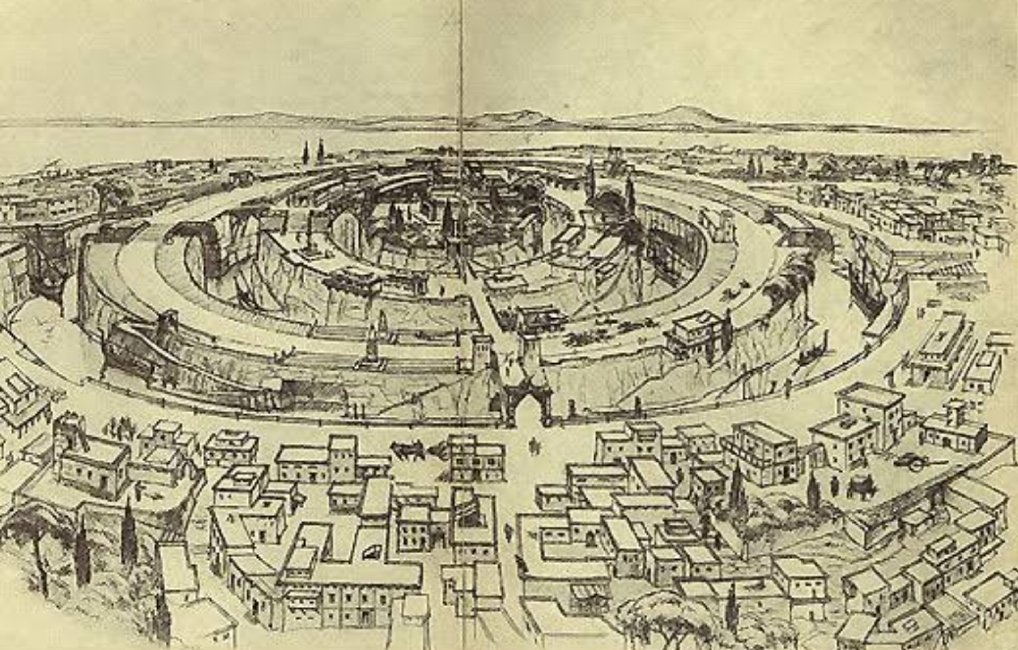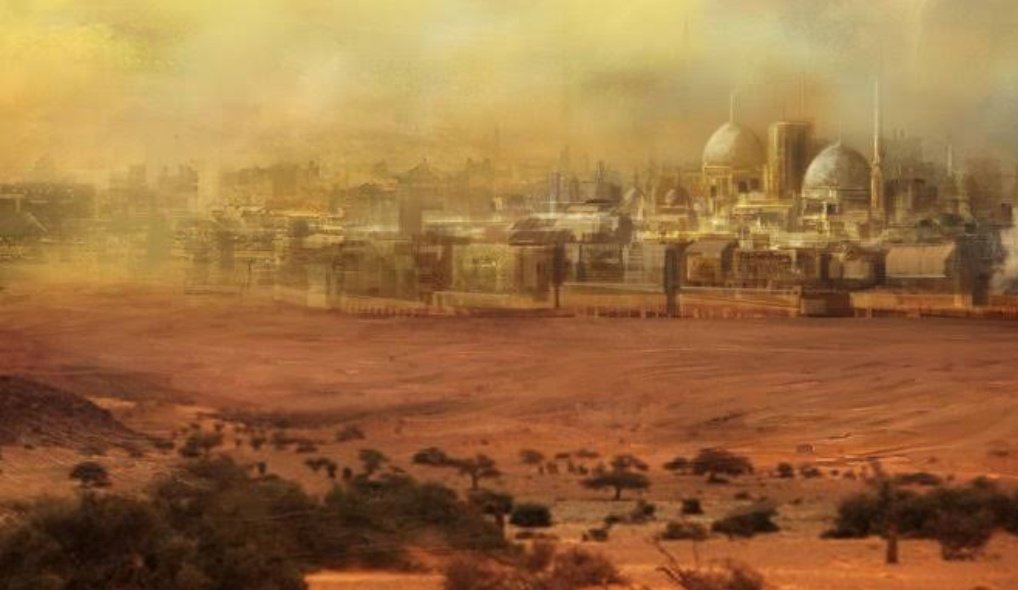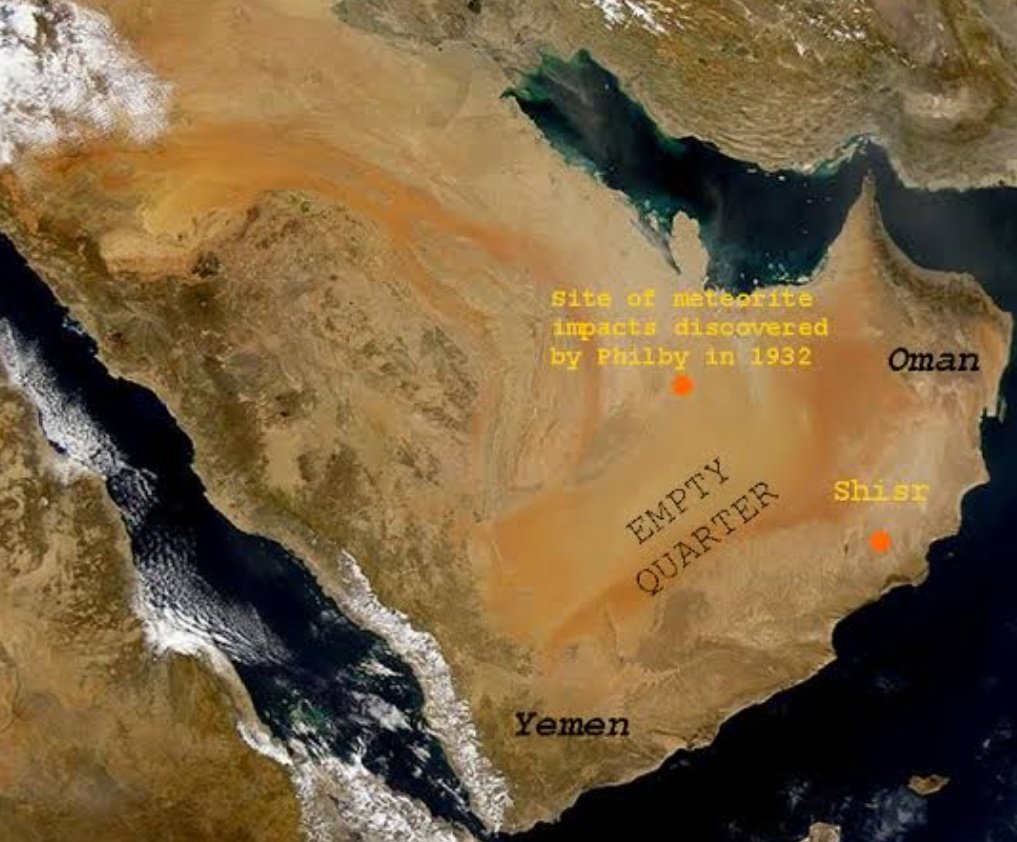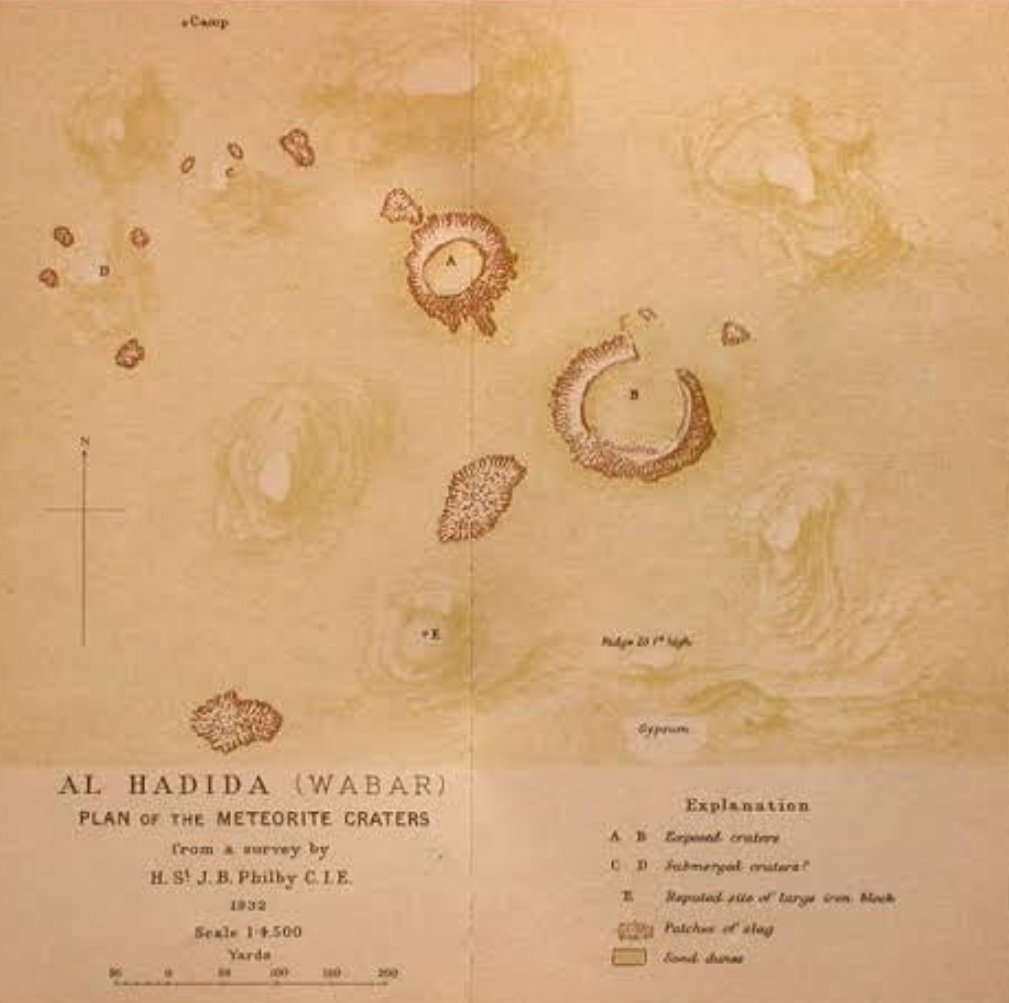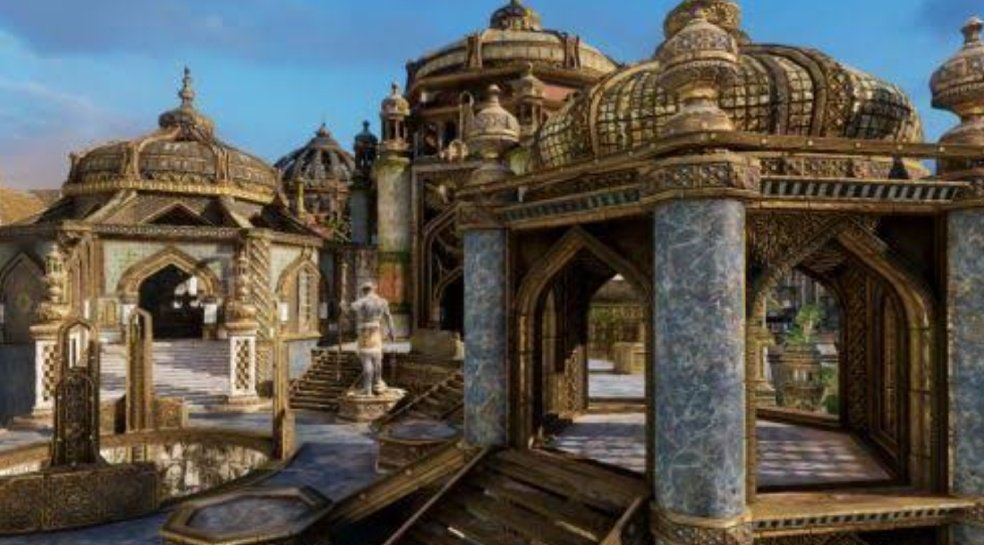I once wrote extensively on the Lost City of Ubar. Wabar. Iram of Pillars.
All the names refer to Arabia's own lost city. Or rather, more popularly known as the "Atlantis of the Sands"
Since I can't locate the article, will be putting it out in thread format I guess:
All the names refer to Arabia's own lost city. Or rather, more popularly known as the "Atlantis of the Sands"
Since I can't locate the article, will be putting it out in thread format I guess:
In Plato’s dialogue, ‘Timaeus and Critias’, there is a mention of a lost city; a city that operated on excellent socio-economic conditions, was built upon idealistic notions and was far-much advanced compared to the other cities of the time (roughly 9000 years ago).
Western archaeologists almost always believe, it refers to the famed city of Atlantis. However, the concept of lost cities isn't something entirely exclusive to the Western culture.
Rumour has it that somewhere in the deserts of the Arabian Peninsula, there used to be a lost city too; a city that was the archetype of Atlantis itself. This was later expounded upon and became a subject of fascination (or an Orientalist’s wet dream- whichever you prefer)
People have speculated its location time and again. Some say it lies along the long stretch of the Rub-Al-Khali desert (also known as the 'Empty Quarter')
Whereas others pinpoint its exact location to be in Shisr, a village in Oman.
Whereas others pinpoint its exact location to be in Shisr, a village in Oman.
Regardless of wherever it was located, historical do agree on one thing - Wabar/Ubar/Iram was known for its splendour and riches. Bustling metropolis with gilded towers, centred heavily on trading frankincense and the finest jewels in the regions. It was a hub of sorts.
historical texts*
The Latin term for any flourishing city in the Arabian peninsula was “Arabia Felix”, translating to ‘happy’, ‘fertile’ or ‘blessed’ Arabia; which is exactly what Iram/Ubar was referred to, and is also the title of Bertram Thomas’s book.
This is an excerpt from his book:
This is an excerpt from his book:
There is no knowing what eventually caused the downfall of the city and its’ remains to be lost forever; but according to Islamic legends, the excessive wealth and good fortune turned Ubar’s citizens wicked and corrupted, which led them to their end.
The Quranic mention of the ‘Iram of Pillars’, could give us one possible explanation of what could’ve caused its downfall
It is believed that the ancient tribe of Ad (also known as the ‘perished’, or the ‘lost Arabs’) were known for their noticeable, towering tent-pillars gracing the city of Ubar.
They turned wicked and rejected the Old Testement & the teachings of the Islamic Prophet, Hud.
They turned wicked and rejected the Old Testement & the teachings of the Islamic Prophet, Hud.
This in turn, caused God to unleash his wrath upon them; explained further by the following verses in the Quran:
(Notice the word 'stature' in the verse. Referring to Iram's greatness, as was known in the entire peninsula)
(Notice the word 'stature' in the verse. Referring to Iram's greatness, as was known in the entire peninsula)
The violent end, often implied in these verses as well as hinted in other historical texts, seems to be an aggressive sandstorm of some sort; which is highly probable, given how frequent sandstorms are in the particular region.
There is no physical evidence to back this theory up, however satellite imaging has shown the existence of two craters in the Empty Quarter, which has led some historians to speculate that the sandstorm may have caused the city to cave inwards.
All in all, the city of Ubar/Iram mimics the fate of other countless cities lost in the ravages of time; Pompeii, Atlantis, Petra etc. Is there sufficient evidence to claim for sure it may have existed in all its grandeur, and then perished as horribly? Maybe.
The city is also mentioned in the third installment of the videogame Uncharted, as Iram of Pillars; where the protagonist Nathan Drake, sets out in search of the legendary lost city.
Ubar/Wabar/Iram of Pillars, may remain buried forever under the desert sands. But bless the Bedouins and their rich oral traditions - hope for the existence of the city remains.
The quest for the Atlantis of the Sands, does not end here.
The quest for the Atlantis of the Sands, does not end here.

 Read on Twitter
Read on Twitter
